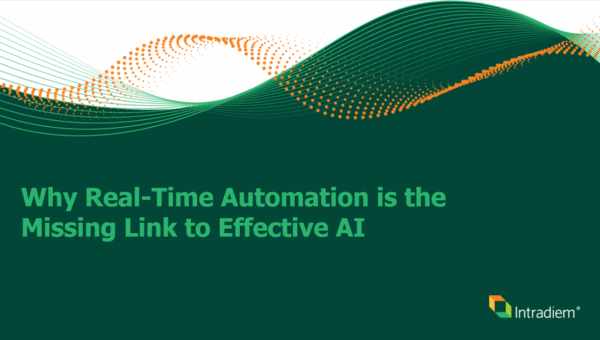
15 Ways to Build Employee Efficiency
Are your employees working hard, working smart, or both?
In the last two months, I’ve written about employee effort and employee empowerment. This month, I’m going to tackle employee efficiency.
How is that different from the other two? Let’s start by defining efficiency or being efficient, and then I’ll come back to that question.
According to Dictionary.com, efficiency is: the state or quality of being efficient, or able to accomplish something with the least waste of time and effort; competency in performance; accomplishment of or ability to accomplish a job with a minimum expenditure of time and effort.
If we reduce employee effort and increase employee empowerment, the outcome ought to be improved employee efficiency. If we hire the right employees* and if our employees are engaged and passionate about what they do, the outcome ought to be improved employee efficiency; they’ll find the right way to work.
* Note that inefficiencies can be introduced when we hire the wrong people – those who don’t have the right skills, aren’t teachable, or just don’t know how to get the job done. Inefficiencies can also be introduced when we ask employees to do more than they are capable of doing in the allotted time, often resulting in burnout.
Assuming the two items mentioned in the previous paragraph are not a factor, how do we know if our employees are or aren’t working efficiently? First, we can see where they are wasting time, effort, and materials. Second, we can measure efficiency with various metrics. Of course, the key is not to focus on the metrics but on the outcomes. When we identify an inefficient process, let’s fix it – not beat up the employee for doing what he was told to do with the tools he was given. And third, employees can tell us about the inefficiencies themselves.
How can we fix inefficiencies? First we need to understand them; we need to uncover why the employee is not working efficiently. To do that, there are two great tools:
- Journey mapping: When we walk in the employee’s shoes and map what he is trying to do, we can easily identify areas of the process that are painpoints, that are taking more steps than reasonable, or that are being done with the wrong tools. Bottom line, mapping can help call out inefficiencies in any process. Map from the employee’s perspective and incorporate the employee’s voice and feedback into the map to ensure you really understand what he’s going through or dealing with.
- Root cause analysis: It provides us with answers – not off-the-cuff answers but drill-deep-down answers – to product or service issues. Sometimes the answers are not the obvious. We need to step back and think deeper about why things are the way they are. I like using 5 Whys to conduct root cause analysis. How it works: State the problem and then ask “Why?” five times to drill down to the ultimate cause. You can adapt this process to your needs; sometimes asking “Why?” five times is too many, and sometimes you need to ask it more than five times.
How can we help employees work more efficiently? In a nutshell, we need to ensure they have the knowledge and tools to meet the day’s challenges. How do we achieve this? Here are 15 things to consider:
- Open and ongoing communication: let’s ensure employees are working on the right things, things that matter; if we’re not talking to them regularly about what’s on their plates and what’s important, they may be spending too much time on low or lesser priority items.
- Eliminate ambiguity and uncertainty: vagueness is the absence of clarity, which is required for employees to know what is expected of them, both in their roles within the company and how what they do contributes and relates to the customer experience.
- Culture: think about your workplace culture. Does it encourage or inhibit productivity? Is yours a culture that supports employee innovation and values employees who question “why do we still do things this way?”
- Teamwork: when people collaborate or work in teams, the hope is that they find better ways to work together and get the job done. (That’s the hope; it doesn’t always work out that way.)
- Feedback: give employees feedback about their work but also listen to their input and opinions about how things are getting done. Don’t discount their opinions and what they have to say. Ask them about their work and about inefficiencies and listen for painpoints. Then do something about it.
- Share best practices: if someone’s doing it right or doing something well, don’t be shy about sharing that approach with others.
- Help and support employees: when they say they need it, act.
- Consistency: stay the course in what you are doing (unless change is desperately needed, especially to introduce efficiencies); constant change causes everyone to have to adjust, adapt, start over, and lose efficiencies.
- Education and training: the better educated your employees are about the task at hand, the vision, the mission, the brand promise, your products, the desired customer experience, etc., the smarter they will work.
- Outcomes: make sure employees understand and focus on the desired outcome.
- Goals: make sure employees have reasonable goals; re-evaluate those goals and make sure they are tied to the desired outcome. Make sure goals and expectations are clearly communicated.
- Skills: ensure employees’ skills are matched to the role and to the customer need.
- Behaviors: model and reward the behaviors you want to continue, especially those that simplify getting the job done (right).
- Tools and resources: ensure employees have the right tools and resources to do the job.
- Automation: any time you can automate manual intraday processes, you’re sure to introduce efficiencies.
I’m sure there are other – perhaps more tactical – ways to help employees work more efficiently. But if you can get some of the basics down, you should see immediate progress.
Work smarter, not harder? Yes, that’s what they say. Me? I think there’s room for both. Work smart and work hard. Nothing wrong with that.
Working hard and working smart sometimes can be two different things. – former Senator Byron Dorgan (D-North Dakota)








